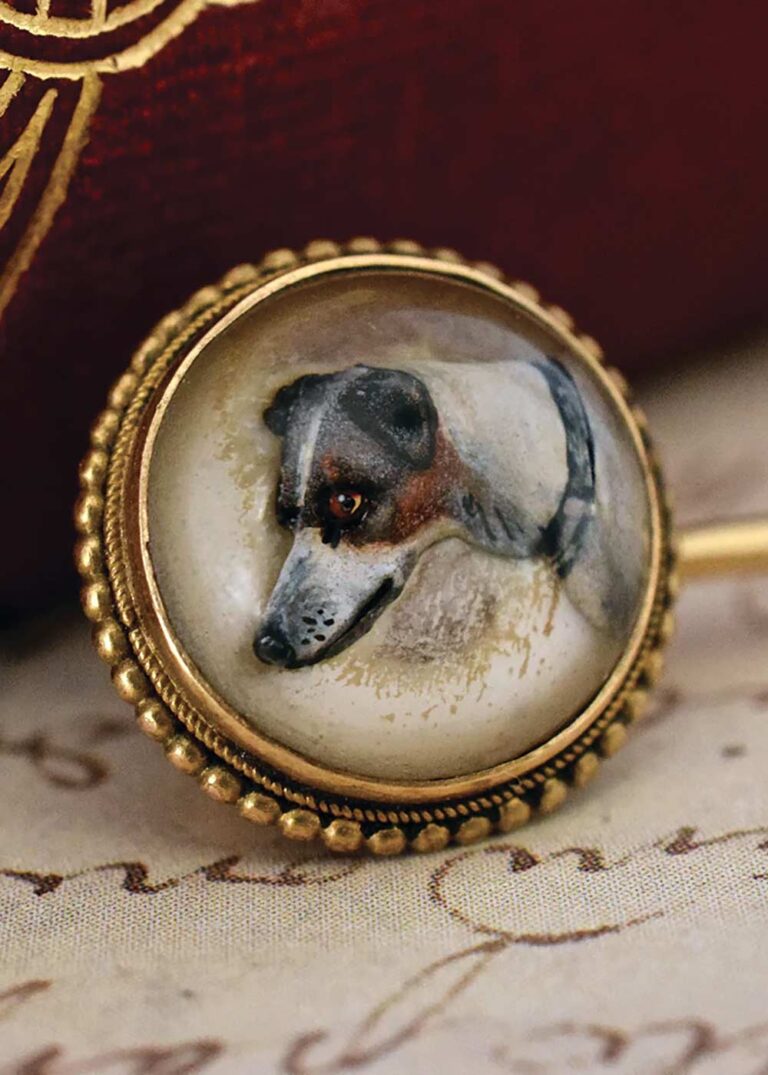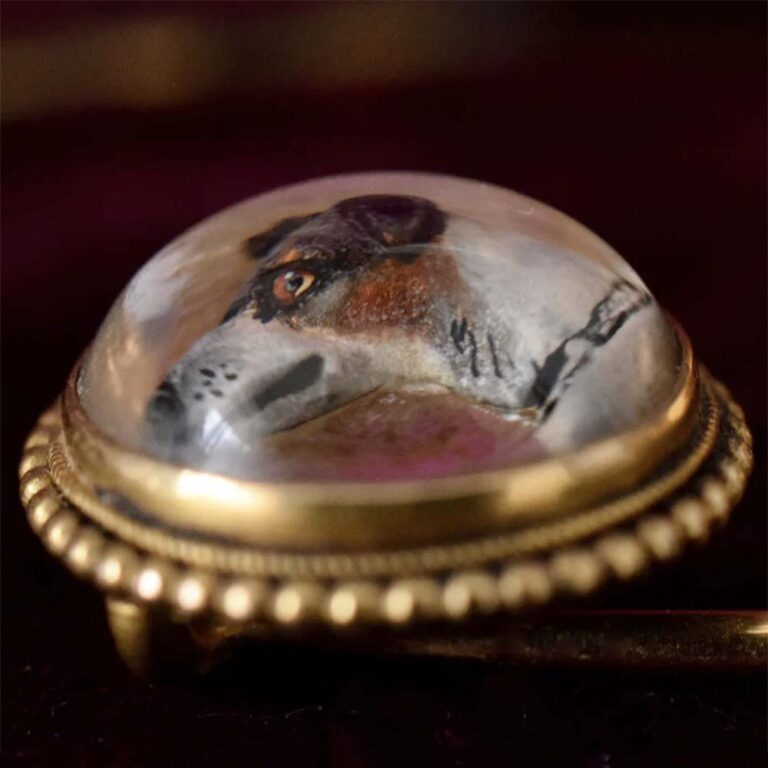Essex crystal was a popular Victorian trend that today can seem a little bit kitsch, but in its time was hugely popular. The term refers specifically to a domed piece of rock crystal that’s engraved on the reverse (which is flat) before being painstakingly detailed with oil paints. The result, when viewed from the front, is a 3D painting floating in cabochon crystal. It’s known more formally as a reverse intaglio, differing from the traditional intaglio technique which is carved on the same side as it’s intended to be viewed.
It’s been suggested that this particular technique was originally developed by an Englishman called Thomas Cooke, who was influenced by a Belgian gemstone carver called Ernest Pradier. Pradier and his wife arrived in England in the 1890s, setting up a workshop in London in 1896/97 from which they sold painted crystal into Europe and the United States. But the first English productions can be dated to four decades earlier, to around 1860. At this time Thomas Cooke owned a company that manufactured scientific apparatus, including lenses; his crystal pieces were sold through Hancock’s in London.
The miniature works created by Cooke and his apprentice, Thomas Bean, were of such high quality that it was assumed by the general public that they could only have been produced by famed Victorian miniaturist William Essex. Official miniaturist of Princess Augusta of Cambridge, Queen Victoria and Prince Albert, Essex died in 1869, only a few years after the first examples of ‘Essex’ crystal appeared on the market – and were, confusingly, named after him, despite him having nothing to do with their creation. Essex did have a connection to the technique; his pupil, William Bishop Ford, assisted him in his workshop in the 1850s and ‘60s and it was Ford who popularised the technique from the mid-1860s, setting miniatures in jewellery such as stick pins. Ford often used the image of a fox head, which was also a popular motif in Essex crystal; a further (tenuous) connection to William Essex.
Hardly any of the craftsmen working in Essex crystal signed their work; perhaps just Emile Pradier, son of Ernest. We do know that Cooke’s apprentice Thomas Bean trained his son and then his grandson in the technique, which was quite complicated; after the rock crystal had been polished into a cabochon, a watercolour of the subject matter was painted on the back of the crystal. A combination of oil and diamond dust was used alongside up to 200 different tools to carve the design deep into the crystal, before it was rendered in oil paints using extremely fine brushes. The crystal was then backed onto gold foil (mother-of-pearl was used on later pieces) before being set in the respective item of jewellery.
The most common themes are hunting scenes, animals (especially dogs) and flowers, with the jewellery usually in the form of brooches, stick pins, cufflinks, buttons and studs, although rings and bracelets can sometimes be found.
By the turn of the 20th century there were many fakes of Essex crystal, often with the design simply painted onto a backing and glass overlaid to look like crystal and act as a quasi magnifying glass. Large quantities of moulded glass were produced that could be multi-layered and painted. The best way to determine if a piece of Essex crystal is original is to inspect it using a jeweller’s loupe for magnification. The depth of carving and quality of the painting will be indicative of the item’s originality.


